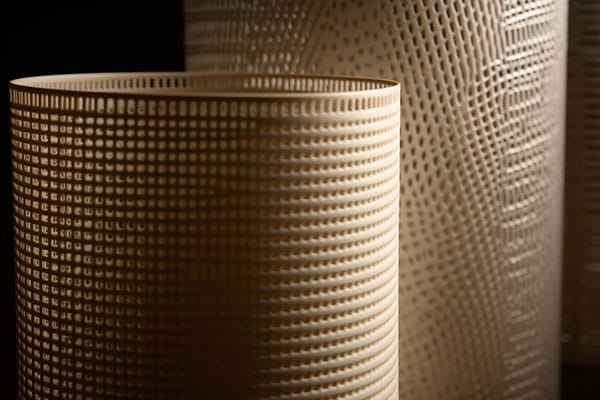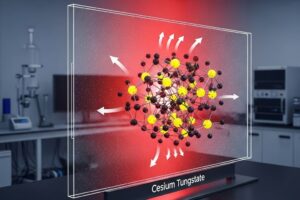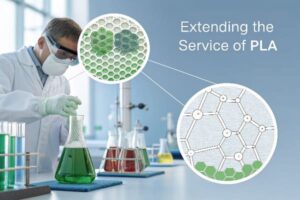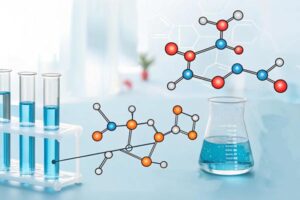Polyester monofilament is vital in materials science, being applied in textiles, industry, and medicine due to its high strength and wear resistance. In the industry, it ensures the smooth operation of tasks like lifting and fishing net – making. In medicine, its biocompatible and flexible sutures are reliable. In textiles, it is a key raw material for making clothing, endowing clothes with elasticity. In normal dry conditions, it has high tensile strength and good flexibility, adapting to complex scenarios. It is used in construction safety nets to protect workers and in high – end sports equipment to enhance performance.
Humidity and the Performance of Polyester Monofilament
The performance of polyester monofilament in a dry environment is excellent, but in a humid one, it faces severe challenges. Water molecules in a humid environment act as “destroyers”, slowly penetrating the polyester molecular chains. Ester bonds are the main way that polyester molecules are connected. Hydrogen atoms from water molecules react with oxygen atoms of ester bonds and cause the ester bond to break. This process is called the hydrolysis reaction.
What is Hydrolysis?
Hydrolysis is the process of breaking the bonds in a chain one by one. This causes a series of performance degradation effects. The reduction in strength is one of the most obvious and significant effects. Hydrolysis makes the monofilament fragile and easily breakable, which reduces the lifespan of the product. For example, if industrial filters are hydrolyzed in a moist environment, the mesh will be gradually damaged and the filtration effectiveness will decrease. Filters that need to be replaced frequently not only increase costs but also reduce production efficiency. The appearance can also change; for example, it may yellow or fog. This affects the aesthetics of certain products as well as their market acceptance.
Hydrolysis Resistant Agents: Key to Stability —— Carbodiimide – type Hydrolysis Resistant Agents
Hydrolysis resistant agents have been a breakthrough in solving the problem of polyester monofilament hydrolysis in humid environments. Carbodiimide – type hydrolysis – resistant agents are common. Carbodiimide – type hydrolysis – resistant agents have a unique chemical structure with a highly reactive nitrogen – carbon-nitrogen double bond (-N=C=N-). The nitrogen-carbon-nitrogen double bond of carbodiimide – type hydrolysis – resistant agents can react with active groups in polyester molecules. The hydroxyl (-OH) in the carboxyl group undergoes an addition reaction with the nitrogen-carbon-nitrogen double bond, forming a stable urea structure (-NH-CO-NH-). This is similar to building a stronger bridge between the molecules at the weakest links in the chain.
The newly formed urea-bond structure is more stable and effective than the ester bond and can effectively prevent further erosion of the polyester molecular chains by water molecules. It’s like building a strong defense line along the weak links in the molecular chains, which improves the stability of polyester monofilament in a moist environment. A relatively small amount of carbodiimide – type hydrolysis – resistant agents is able to exert hydrolysis-resistant effects. The cost of the polyester monofilament can be controlled while improving its performance, making it a highly preferred material in industrial production.
Material Modification: Multicomponent Composite to Improve Performance
Material modification, in addition to hydrolysis – resistant agents, is an important way to improve the stability and performance of polyester monofilament when exposed to humid environments. The performance of polyester monofilament is fundamentally altered by blending or copolymerizing it with other materials that have excellent water resistance. In the blending process, some materials with special structures or properties, such as polyethersulfone (PES) and polytetrafluoroethylene (PTFE), are mixed with polyester in a certain proportion. These materials are chemically stable and have good water resistance. When mixed with polyester, they can form an interwoven structure that enhances the strength and water resistance of the monofilament. These blended materials can act as a barrier when water molecules attempt to penetrate the polyester molecular chains, delaying the hydrolysis reaction.
Copolymerization is the process of introducing water – resistant monomers into the polyester chain to form a new copolymer through chemical reactions. When a monomer with a siloxane – like structure is copolymerized, it can have excellent water resistance, low surface energy, and form a hydrophobic layer in the polyester chain. The copolymer may also have other properties such as low friction and antifouling. The addition of nanomaterials such as nano – montmorillonite and nano – silica during the mixing process can enhance the mechanical and water – resistant properties of polyester monofilament. These nanomaterials are highly active and have a high specific surface area. They can be evenly dispersed within the polyester matrix and interact with the polyester molecules.
Surface Treatment: Creating a Barrier
Surface treatment is a key way to increase the stability of polyester monofilament in humid environments. A protective film is formed primarily through coating and film – plating technologies on the surface to stop water intrusion and improve the stability of polyester monofilament in a moist environment.
Summary and Prospect
Various methods can improve the stability of polyester monofilament in humid environments. Hydrolysis – resistant agents, surface treatment, and material modification all play a role. These methods work together to endow polyester monofilament with the ability to resist humid environments from various perspectives.
It is expected that with the advancement of science and technology in the coming years, more innovative materials and methods will be developed. Hydrolysis – resistant agents could be improved with more environmentally friendly and efficient new – type hydrolysis agents. Their action mechanisms might also be more complex and precise.
More information about application of polyester monofilament







